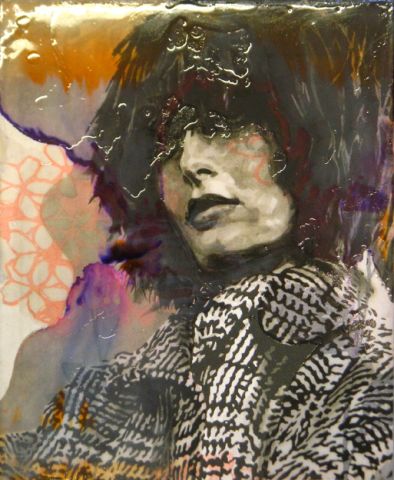Day 26 – Blush and Stain 2
Archives
Day 25 – Saturation
Saturation: Acrylic, pigment, resin and surface preparation on fabric. The pigment was allowed to soak into and saturate the fabric before spreading upwards in waves.
On show until Saturday 30th November 3013.
Available through gallery/ten, Cardiff
Feeling too frantic today to write much about anything at the moment. My website and attached emails are down and the hosting company seems incapable of returning my calls. It’s horrible when my window to the world is closed and it’s out of my hands to do anything about it. Doubly annoying that I’ve been trying to work since 8am this morning and there was noone available at the web hosting company until they’d started work at 9.30. 9.30am!! I thought us artists were supposed to be the lazy ones!
Rant over.
Day 24 – Field 2
It’s all a big experiment… Plant pigments (buttercup, cherry blossom, buddleia), cellulose and resin on glass.
The essence of a field, preserved.
REMINDER! Last chance to see the show! Chroma Utopia ends 5pm Saturday 30th November. It’s in gallery/ten, 23 Windsor Place, Cardiff.
I’ll be in the gallery 1-3pm this Saturday if you fancy a chat about the work.
Day 23 – Dioxazine
Dioxazine. What a great name! Dioxazine Violet is the name of a particularly wonderful shade of purple which I’ve recently fallen in love with.
But despite its synthetic-sounding name it actually comes from coal tar, and has a molecular structure based on carbon. It can be created synthetically, but the process isn’t economically viable.
It was discovered by Carl Graebe and Carl Glaser in 1872, and as a pigment is resistant to light, heat, alkalis, acids, soaps, oils, waxes, solvents, and water. This means it’s great for using in car varnishes, printing, textiles and polymers, and in a in a wide variety of inks and paints.
The colour is so strong and dark when concentrated that it can be used as the pigment in black Indian ink.
So this brings me back to my exploration of pigments and their hidden ‘fingerprints’ of colour; plants contain pigments of various hues, and so it appears do man-made dyes.
In my ‘Dioxazine’ painting I decided to apply the coloured glaze over the entire face and experiment to discover whether the spread of the pigment could be controlled to follow the shape of the hair. It was a great surprise when the wonderful orange was revealed to contrast with the purple. The face became less important than the pigment and its separation out into components of pure colour.
Day 22 – Field 1
Plants contain pigments of such surprising colours. The summer of 2013 preserved here in resin forever!




